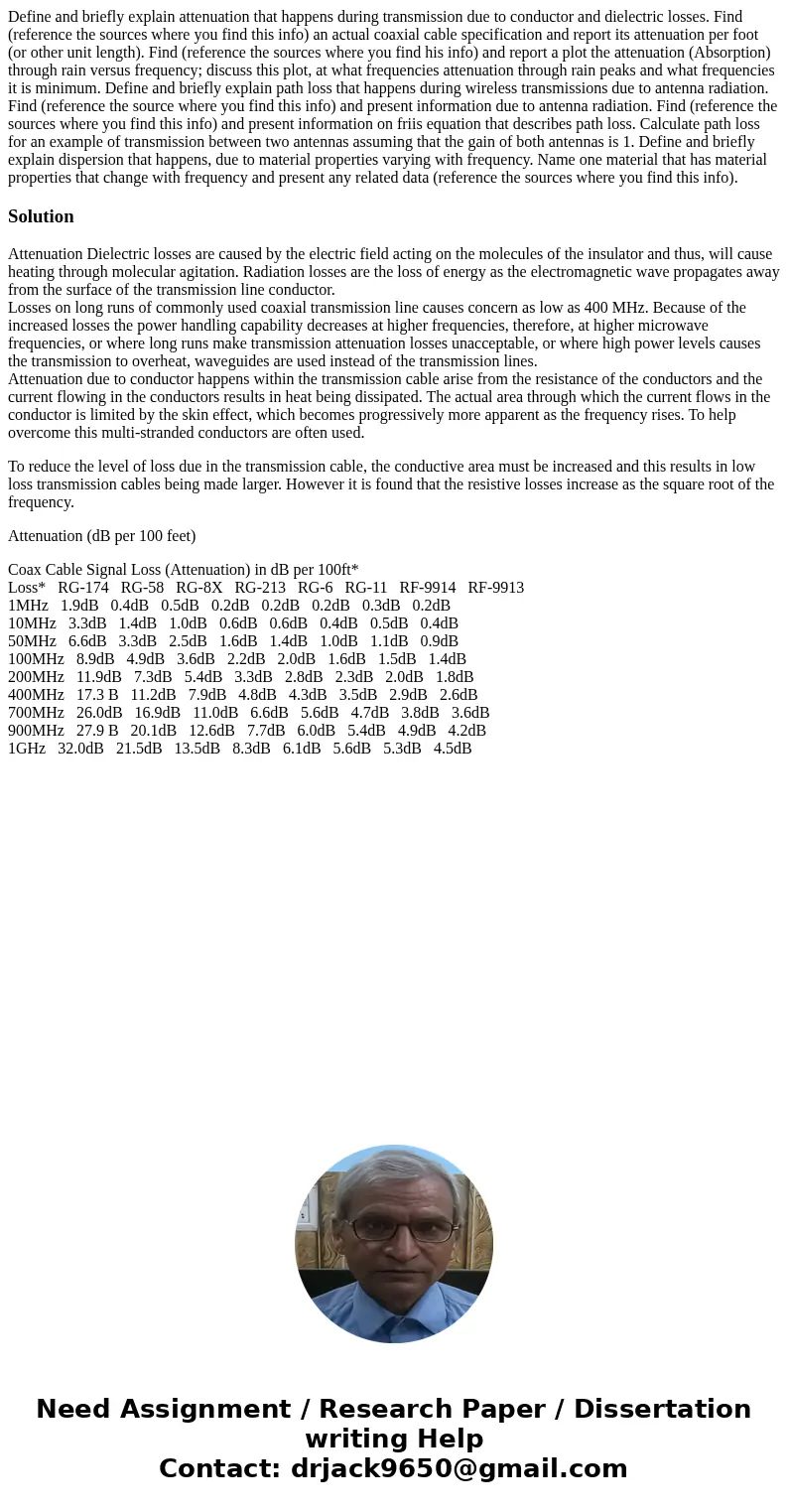Define and briefly explain attenuation that happens during t
Solution
Attenuation Dielectric losses are caused by the electric field acting on the molecules of the insulator and thus, will cause heating through molecular agitation. Radiation losses are the loss of energy as the electromagnetic wave propagates away from the surface of the transmission line conductor.
Losses on long runs of commonly used coaxial transmission line causes concern as low as 400 MHz. Because of the increased losses the power handling capability decreases at higher frequencies, therefore, at higher microwave frequencies, or where long runs make transmission attenuation losses unacceptable, or where high power levels causes the transmission to overheat, waveguides are used instead of the transmission lines.
Attenuation due to conductor happens within the transmission cable arise from the resistance of the conductors and the current flowing in the conductors results in heat being dissipated. The actual area through which the current flows in the conductor is limited by the skin effect, which becomes progressively more apparent as the frequency rises. To help overcome this multi-stranded conductors are often used.
To reduce the level of loss due in the transmission cable, the conductive area must be increased and this results in low loss transmission cables being made larger. However it is found that the resistive losses increase as the square root of the frequency.
Attenuation (dB per 100 feet)
Coax Cable Signal Loss (Attenuation) in dB per 100ft*
Loss* RG-174 RG-58 RG-8X RG-213 RG-6 RG-11 RF-9914 RF-9913
1MHz 1.9dB 0.4dB 0.5dB 0.2dB 0.2dB 0.2dB 0.3dB 0.2dB
10MHz 3.3dB 1.4dB 1.0dB 0.6dB 0.6dB 0.4dB 0.5dB 0.4dB
50MHz 6.6dB 3.3dB 2.5dB 1.6dB 1.4dB 1.0dB 1.1dB 0.9dB
100MHz 8.9dB 4.9dB 3.6dB 2.2dB 2.0dB 1.6dB 1.5dB 1.4dB
200MHz 11.9dB 7.3dB 5.4dB 3.3dB 2.8dB 2.3dB 2.0dB 1.8dB
400MHz 17.3 B 11.2dB 7.9dB 4.8dB 4.3dB 3.5dB 2.9dB 2.6dB
700MHz 26.0dB 16.9dB 11.0dB 6.6dB 5.6dB 4.7dB 3.8dB 3.6dB
900MHz 27.9 B 20.1dB 12.6dB 7.7dB 6.0dB 5.4dB 4.9dB 4.2dB
1GHz 32.0dB 21.5dB 13.5dB 8.3dB 6.1dB 5.6dB 5.3dB 4.5dB

 Homework Sourse
Homework Sourse